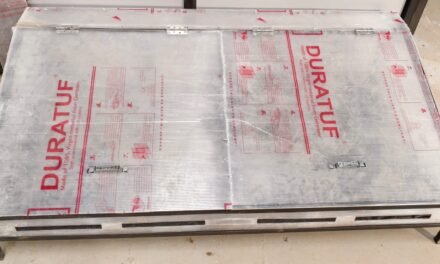Background:
Vigyan Ashram like all the other educational institutes was forced to shut down due to the ongoing Covid-19 pandemic. Most of the students and staff members left for their homes while a few of us preferred to stay on the campus. Since all the regular activities were stopped we were looking for something to work upon during this period as a team. Ashram’s entrance gate provided us that opportunity.
Vigyan Ashram’s entrance had a simple swing-open gate which wasn’t functioning well, due to which it used to stay open most of the time. Since we were supposed to restrict movement into the Ashram during the lockdown, it was even more necessary to fix this problem.
Design specifications:
We conducted a number of brainstorming sessions to determine the design and other specifications of
the gate; the following are the outcomes,
- Type of gate – Level crossing,
- Operation – Automatic with provision for manual operation,
- Prime mover – 0.5 HP motor
- Gearbox (1:40 reduction ratio),
- Length of the barrier – 16 ft.
- Barrier material – Hollow MS circular pipe,
Fabrication:
The gate was fabricated using available resources within the Ashram. The most critical part during the fabrication was the assembly of the motor-gearbox and the barrier.



The motor-gearbox assembly is connected to the barrier via a shaft as seen in the picture. The structure that holds the barrier is welded to the shaft and the barrier is attached to the structure via nuts and bolts.
Trials:
Version 1.0

As previously mentioned the gate is supposed to operate automatically with provision for manual operation, currently we operate the gate manually via a handle attached at the rear end of the motor shaft. The handle rotates the motor shaft, which rotates the gearbox which in turn rotates the shaft connected to the barrier and the barrier moves up and down.
Video of the trial can be viewed by clicking below link:
https://drive.google.com/file/d/1cQ6NSPElkrArQxoxeE3ctBK3ddGjwtR9/view?usp=drivesdk
Difficulties with Version 1.0:
During the manual operation the barrier moved upwards smoothly but oscillated quiet violently along its length while moving downwards.
Probable cause:
The barrier is made up of hollow MS pipe weighing 9 kg. The barrier while moving upwards works against gravity and experiences resistance, during the downward movement the barrier is assisted by gravity. Since the motor-gearbox assembly is being manually operated the rotation of the shaft is not continuous and it experiences sudden stoppages for brief moments. When the shaft suddenly stops the barrier tends to move downwards due to momentum and thus begins to oscillate.
Version 1.1
We fabricated a structure consisting of a pulley to attach counter weight to the barrier as shown in the picture below. The other end of the wire rope was attached at a distance of 10 ft from the motor.

Difficulties with version 1.1
The counterweight successfully stopped the oscillations of the barrier but introduced a new problem. During the upward movement, the counterweight suddenly fell down causing the barrier to swing upwards very fast. During its downward movement, the barrier suddenly fell down on its supporting structure causing the counterweight to bounce on the pulley.
Probable cause:
Since the rope was attached to the barrier at certain angle, the counter weight needed to lift the barrier was higher than the required weight. Once the barrier got lifted the value of the counter weight kept on increasing with increasing angle of the rope relative to the barrier which caused the barrier to swing open rapidly.
Version 1.2:

The pulley and counter weight were removed and replaced by a simple class 1 lever arrangement as shown above.
Difficulties with version 1.2:
Since this gate was supposed to be operated by a 0.5HP motor with an rpm of 1400, we needed a gearbox with a much higher reduction ratio than 1:40 in order to avoid rapid swing of the barrier while opening and closing.
Version 1.3:

The position of the motor was changed, the shaft of the motor was extended and used to wound the wire whose other end was attached to the counterweight.
Difficulties with Version 1.3:
The only difficulty with this version was the amount of vibrations the whole assembly was making resulting in noise. The probable cause was the shaft which we fabricated by joining two hollow pipes.
Version 1.4:

The hollow pipe shaft was replaced by a single solid shaft and the structure on which motor-gearbox were mounted was separated from the structure on which the barrier was placed.
This version of the gate worked satisfactorily during both manual as well as automatic operation.
Finally a permanent electric supply was provided to the motor.





